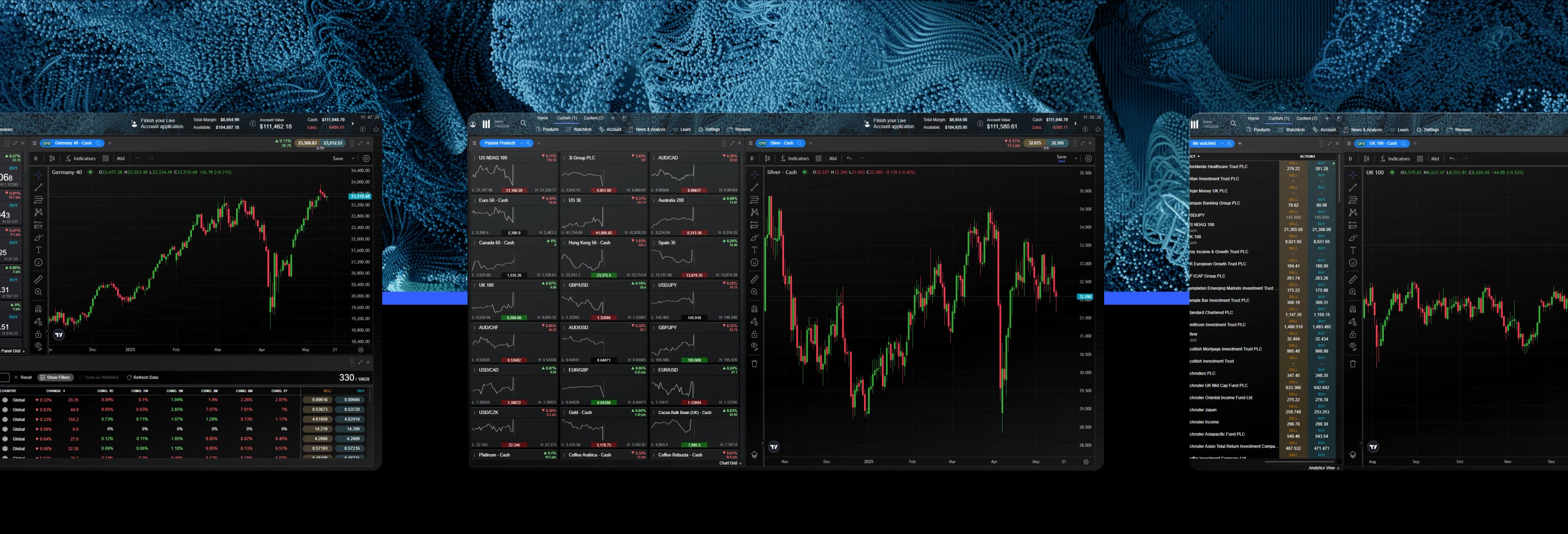Trading terms explained
Are you fluent in the language of trading? If not, or if you need to refresh your knowledge, you’ve come to the right place. This guide explains key trading terminology in plain English, making it essential reading for anyone interested in learning more about trading.
What is trading terminology?
Trading terminology, or trading jargon, refers to the specialized words and phrases that traders and industry professionals use to describe financial markets, activities and products.
Some of these terms may seem obscure at first, but grasping their meaning is key to understanding how trading works.
Trading glossary: a selection of need-to-know terms
To help you learn the lingo of trading, here are a few key words and phrases that every trader should know.
Asset
An asset is a financial instrument or product that has economic value. The value of the asset may only be realized when its owner sells it for a profit. In a trading context, assets are commonly linked to stocks, indices, commodities or forex pairs.
Bear market
A bear market is a market that is in decline, characterized by falling asset prices. The related term bearish describes traders who expect asset prices to decrease.
Bid-ask spread
The bid-ask spread is the difference between the highest price a buyer is willing to pay for an asset (the bid price) and the lowest price a seller is willing to accept (the ask price).
Bull market
A bull market is a market that is on the rise, characterized by rising asset prices. The related term bullish describes traders who expect asset prices to increase.
Derivative
Derivatives are financial contracts, the value of which is derived from an underlying asset, such as a stock or commodity. When you trade derivatives, you speculate on the price movements of the underlying asset – gold, for example – without owning it.
Go long
Going long means buying an asset with the expectation that its price will rise, allowing you to sell it for a profit later. The opposite of a ‘long’ position is a ‘short’ position.
Go short
Going short, or short-selling, means entering a trade with the expectation that the price of the asset will fall. The trader makes a profit if the price of the asset falls, or incurs a loss if the price rises.
Leverage
Leverage refers to the use of borrowed money to increase the potential return of a trade. When you trade on leveraged products, you deposit the margin (see below) while the broker provides the rest of the notional value of the position. While leverage gives you greater exposure to financial markets, it also increases your risk as your profit or loss is based on the full notional value of your position.
Liquidity
Liquidity refers to the ease with which an asset can be bought or sold in the market without affecting its price. Assets with a high level of liquidity can usually be bought and sold quickly, while those with a low level of liquidity may be affected by slippage.
Margin
Margin refers to the money required to open a leveraged position. For example, if you go long on (‘buy’) 10 units of Company XYZ, which is trading at £1 a unit, the full value of the position would be $10. However, the margin required to open a position might be 20%, so you’d need only $2 to enter the trade. Trading on margin is considered risky because it amplifies potential gains and losses equally, since your profit or loss is based on the full notional value of your position.
Over-the-counter (OTC)
OTC trading is done directly between two parties, rather than through a centralized exchange like the Toronto Stock Exchange. Most OTC trades are handled by a broker-dealer network.
Tips for learning new trading terms
Understanding trading terminology is a key step towards navigating the financial markets with confidence. Here are two tips to help you broaden your trading vocabulary:
Start with the basics: First, focus on learning the most common terms, such as those listed above. Once you’ve grasped the basics, move on to more complex concepts.
Refer to our glossary: When you encounter a trading term you don’t understand, look it up in our helpful glossary. This will enable you to quickly pick up any unfamiliar expressions.

